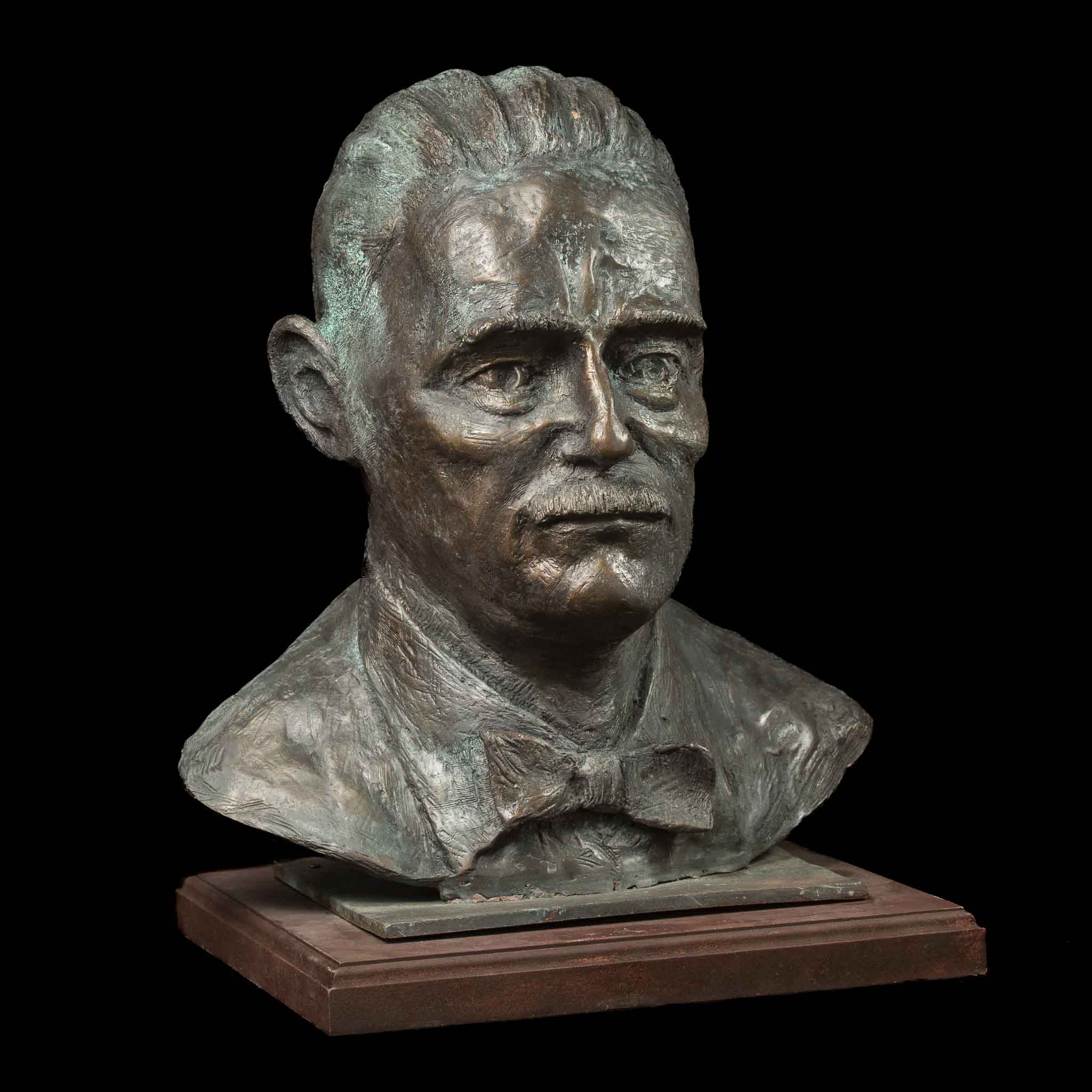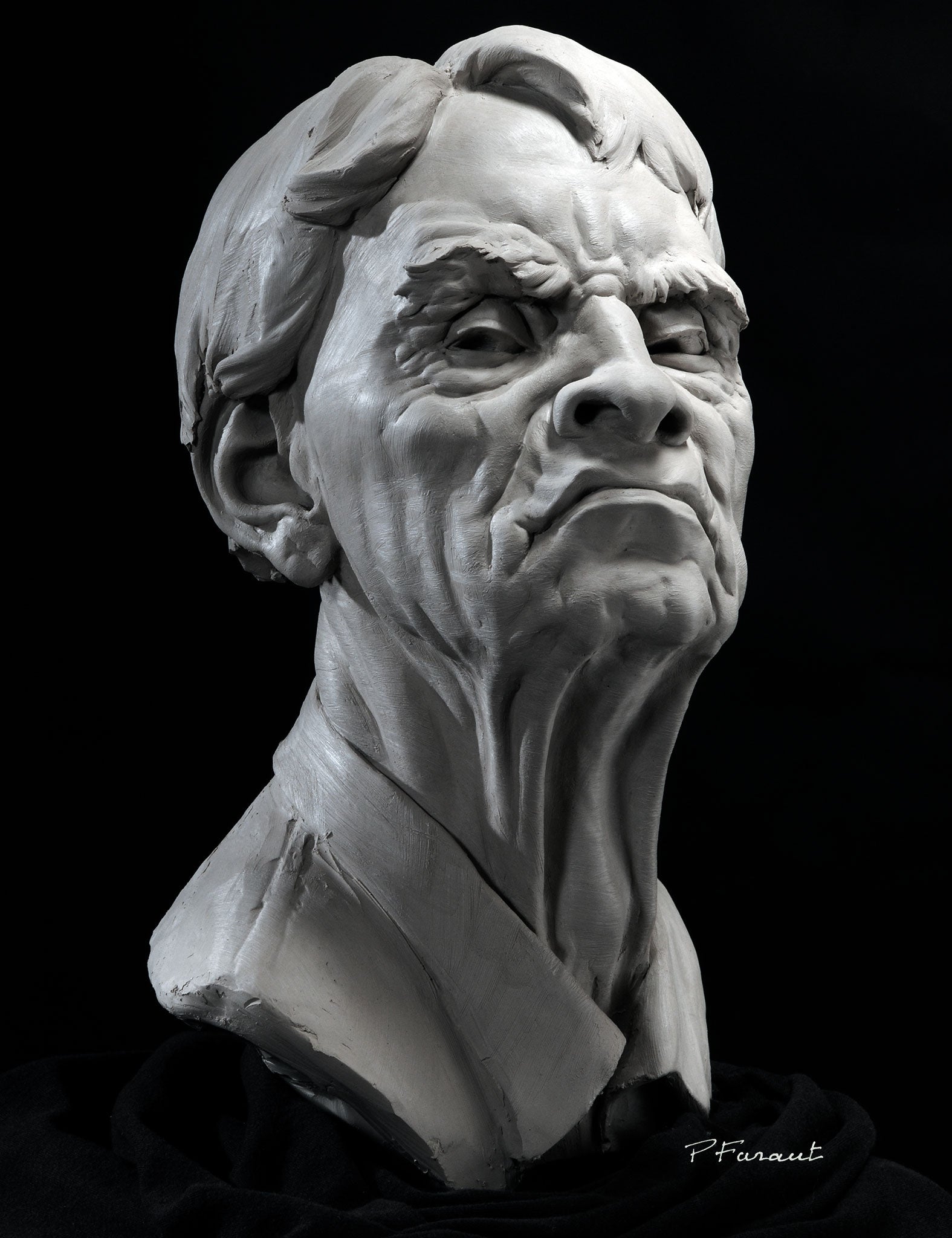Crafting Expressions: The Unique Artistry of a Portrait Sculptor
Wiki Article
The Development of Sculptures: From Ancient to Modern
The Advancement of Sculptures: From Old to Modern.Sculpture, one of the earliest types of art, has actually been an indispensable part of human world for centuries (Robert C Hitchcock Sculptor). From the ancient worlds of Egypt and Greece to the contemporary period, sculptures have actually progressed, showing changes in artistic methods, materials, and social impacts. This journey via time traces the advancement of sculptures, checking out the changes in style, subject issue, and imaginative expression
Beginning with the ancient world, sculptures crafted from rock and later bronze caught the significance of deities, leaders, and daily life. The Renaissance period saw a resurgence of classic sculpting strategies, as artists looked for to imitate the stylish forms of old Greek and Roman sculptures. In the contemporary age, artists challenged conventional limits, accepting abstraction and experimentation with brand-new products.

This expedition will dig right into the varied development of sculptures, revealing the abundant tapestry of imaginative expression across various durations and cultures.
Ancient Sculptures: From Stone to Bronze
Old sculptures transitioned from being taken of rock to being cast in bronze. This shift noted a significant development in the art of sculpture, permitting greater refinement and detail in the ended up works. Rock sculptures, while impressive in their very own right, were limited by the nature of the material. Stone needed considerable carving and forming, typically causing a much more streamlined representation of the topic.The introduction of bronze as a tool for sculptures brought around a transformation in imaginative expression. Bronze offered carvers the possibility to create lifelike and elaborate kinds that were not feasible with stone. The process of casting bronze enabled the production of multiple copies of a sculpture, allowing bigger distribution and preservation of these imaginative work of arts.
The transition from stone to bronze likewise saw a shift in the subject of sculptures. While rock sculptures predominantly portrayed gods, goddesses, and mythical numbers, bronze sculptures started to mirror a broader variety of subjects, including everyday people and pets. This development of subject showcased the versatility and adaptability of the bronze medium.
Renaissance Revival: Sculpting in the Classic Style
The Renaissance revival of sculpture saw a renewal in the classic design, structure upon the improvements made throughout the shift from rock to bronze in ancient sculptures. During this period, artists sought to recreate the classical aesthetic and ideals of beauty that were widespread in old Greek and Roman sculptures.One of the key characteristics of the Renaissance rebirth was the emphasis on naturalism and the human type. Carvers like Donatello and Michelangelo strove to catch the anatomical information and expressions of their topics with extraordinary accuracy. They examined the human body and incorporated their monitorings into their sculptures, resulting in natural and practical depictions.
One more important aspect of the Renaissance rebirth was the expedition of perspective and deepness. Artists made use of methods such as contrapposto, where the weight of the body is shifted away, creating a feeling of movement and dynamism. They additionally try out various materials, consisting of marble and bronze, to accomplish a degree of class and intricacy in their sculptures.
The timeless style of the Renaissance resurgence had a profound impact on later periods of art, functioning as a structure for the advancement of Western sculpture. It brought a restored gratitude for the elegance and splendour of the human kind, and its legacy can still be seen in modern sculptures today.
Innovation and the Avant-Garde: Breaking Standard Borders

One of the vital attributes of modernist sculpture was the emphasis on abstraction. Artists moved far from practical depictions and instead concentrated on recording the significance of the topic via streamlined kinds and geometric forms. This departure from conventional representation allowed artists to share their feelings and concepts in a much more personal and subjective fashion.
Furthermore, the progressive motion challenged societal standards and conventions, motivating artists to experiment and push the borders of their art - Portrait Sculptor. Artists started integrating non-traditional materials such look at this now as located items, industrial products, and also natural components right into their work. This expedition of brand-new materials and strategies not only expanded the opportunities for sculpture however also tested the standard notions of what can be thought about art
Contemporary Sculptures: Exploring New Materials and Concepts
With an emphasis on checking out brand-new materials and concepts, modern sculptures have actually reinvented the field of art. Artists today are pressing the boundaries of typical sculpture by using innovative materials and trying out with abstract concepts. These sculptures test conventional ideas of form, materiality, and significance, inviting visitors to take part in a brand-new and provocative creative experience.Contemporary sculptors are welcoming a large range of products, including plastic, glass, metal, and also organic matter. Equine Sculptures. They are not limited to the conventional tool of rock or clay, enabling higher freedom of expression and testing. This change in the direction of unconventional materials has actually opened brand-new opportunities for artists to create sculptures that are dynamic, interactive, and visually striking
Along with discovering brand-new materials, contemporary sculptures also explore complicated and abstract principles. Musicians are currently discovering motifs such as identity, social issues, and the environment, utilizing sculpture as a powerful medium for social commentary and self-questioning. These sculptures challenge customers to believe seriously and engage with art on a deeper level, sparking conversations and provoking emotional responses.
Global Influences: Sculptural Traditions From Around the Globe

In ancient Egypt, sculptures were created primarily for funerary and religious functions. The legendary sculptures of pharaohs and gods, such as the Great Sphinx and the breast of Queen Nefertiti, showcase the Egyptians' proficiency of stone carving and their belief in the afterlife.
In ancient Greece, sculpture reached its peak during the classical duration. Influenced by the perfects of harmony, elegance, and percentage, Greek sculptures emphasized the human kind and commemorated the accomplishments of heroes, gods, and professional athletes. The renowned sculptures of Aphrodite of Knidos and the Discobolus exemplify the Greeks' quest of perfection in sculptural art.
In old Rome, sculpture offered both artistic and political purposes. Bronze Sculptures. Roman sculptures typically depicted emperors, generals, and mythical figures, reflecting the power and majesty of the empire. The marble statue of Augustus of Prima Porta and the huge Arch of Constantine are notable instances of Roman sculptural achievements
Oriental sculptural practices, especially in India, China, and Japan, have likewise had an extensive influence on the advancement of sculptures. Japanese sculptures, affected by Buddhism, emphasize simpleness and serenity, seen in the calm statuaries of Buddha and the classy art of bonsai.
The worldwide influences on sculpture proceed to develop in the modern-day era. Artists today draw ideas from various sculptural customs, including brand-new materials, techniques, and ideas to develop innovative and thought-provoking art work. The blend of different cultural influences has provided increase to a varied and vibrant sculptural landscape, reflecting the interconnectedness of our global society. As we want to the future, it is specific that the worldwide impacts on sculpture will certainly remain to form and redefine this old art kind.
Final Thought
Finally, the development of sculptures has seen a shift from ancient stone and bronze works to the timeless rebirth throughout the Renaissance. This was adhered to by the splitting of standard limits with modernism and the avant-garde movement. Today, modern sculptures discover brand-new materials and concepts, while also attracting ideas from worldwide sculptural customs. The journey of sculptures reflects the ever-changing imaginative expressions and social influences throughout history.From the old civilizations of Egypt and Greece to the modern age, sculptures have actually advanced, reflecting modifications in creative methods, products, and cultural influences.Beginning with the ancient world, sculptures crafted from stone and later bronze caught the significance of divine beings, leaders, and day-to-day life.Ancient sculptures transitioned from being carved out of stone to being cast in bronze. While stone sculptures primarily portrayed gods, goddesses, and mythological figures, bronze sculptures began to show a wider variety of topics, consisting of daily individuals and pets.In conclusion, the development of sculptures has actually seen a change from old rock and bronze functions to the timeless rebirth throughout the Renaissance.
Report this wiki page